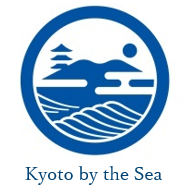The San’in UNESCO Global Geopark
designed by volcanos.
Stretching from Kyoto through northern Hyogo, and Tottori, this UNESCO Global Geopark is a geologist’s dream. But even for those less enthusiastic about rocks, there are some pretty amazing reasons to visit this incredible area. The Kyoto portion of this geopark is located in Kyotango, an area well-known throughout Japan for its unparalleled quality of seafood, silk heritage, and stunning beaches. It is becoming better known internationally as a mecca of longevity, as it is home to Japan’s highest concentration of centenarians.
A beginner’s guide to Kyotango (by the season)
Spring
The region will be lush with nutrient-rich mountain run-off and snow melt, feeding the organic farms and rice fields. Flowers will start to bloom in profusion and the pop of color the yama-zakura (mountain cherry blossoms) give to the steep forests rising above the sea is a much more exquisite view than the endless rows of manicured trees on display throughout Japan. Because of the area’s high quality water and rice, numerous sake breweries are able to thrive. Spring is when the breweries will showcase their new sake, and often open up their breweries to guests for tastings and tours. The city of Kyotango alone has five sake breweries, some of which have won prestigious international awards.
Click below for an introduction to the area’s breweries!
summer
During the six to eight weeks that make up Japan’s “beach season,” (mid July to the end of August), the beaches are pretty crowded with people trying to escape the heat of the nearby cities of Kyoto, Osaka, and Kobe. Day-trip visitors are quite common, as are people staying in seaside hot spring hotels and inns. There is a reason that people make the journey up north, and it’s not just for cooler temps. Because unique and rocky coastline, the area has some impeccable beaches including one called Kotohikihama, known to most as the “singing sands” beach. It was the first beach in Japan to ban smoking, the main reason being that the sand has a rare quartz content that causes the sand to sing when walked upon. There are other beaches throughout the world that have this phenomenon as well, and it is worth visiting one to experience the sound for yourself.
The area is chock-full of amazing beaches. Dive in.
Summer spotlight: Yuhigaura
Yuhigaura is a natural hot spring resort area located on the Sea of Japan. Seafood cuisine, white sand beaches, clean waters, watersports, and more await.
fall
The leaves begin changing and the fresh rice is harvested. There are a variety of seasonal fruits and vegetables that pair perfectly with the area’s high quality koshihikari rice, which has received multiple “highest quality” ratings.
Of course, as the leaves begin changing, people come to see the mountains turn gold, and when reflected against the Sea of Japan, the scene is truly amazing. Each season also brings with it different seafood. The variety is almost never ending. As the sea’s waters begin to cool, fish migrate along the Japanese Sea, brining in new types of sea bream, yellowtail, squid, crabs, and much more.
Fall is also a perfect season for onsen. The air is getting cool and leaves are starting to fall into the outdoor baths overlooking the sea. Listening to the waves after talking a walk through the changing foliage is the epitome of nature therapy. To see some of the onsen that this area has to offer, check out Kyoto by the Sea’s wellness section.
winter
Believe it or not, the UNESCO Global Geopark is a bucket-list destination for tourists in winter. One main reason for that is the seafood. The region is home to some outrageously rare delicacies, such as the Taiza Crab, which fetches prices well over 50,000 for a single crab. Oysters, yellowtail, and wild game are also must try winter specialties in this region.
Tateiwa in winter.
It’s not just fishermen who brave winter’s waves, surfers can be found in abundance on any day there is a swell (wearing wetsuits of course, it’s still winter after all).
Have an interest in staying along the UNESCO Global Geopark? Here are some hot spring accommodations that are sure to hit the spot no matter the season. (Click the link and scroll down the page for the UNESCO Global Geopark area accommodations.)







